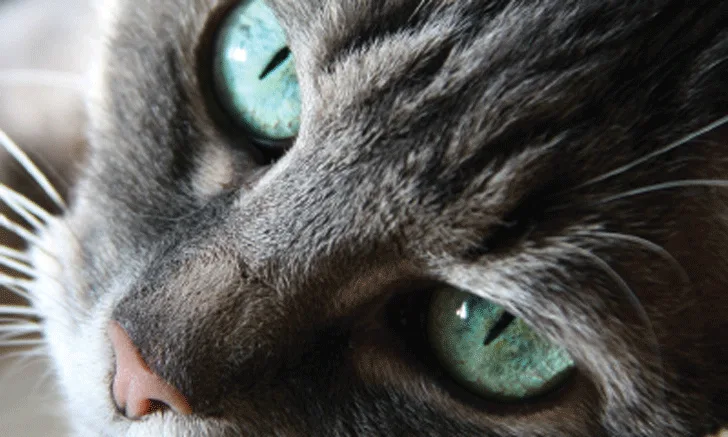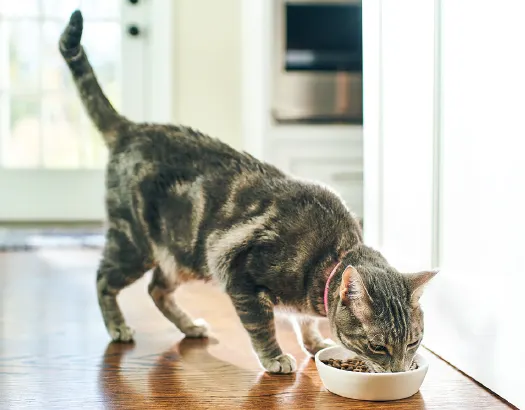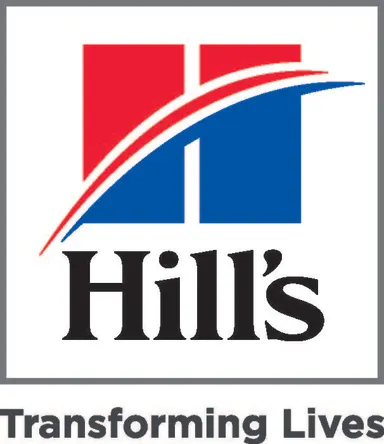Innovative Nutritional Approach to Feline Constipation
Iveta Becvarova, DVM, MS, DACVN, Director, Global Academic & Professional Affairs, Hill's Pet Nutrition, Inc

Sponsored by Hill’s® Pet Nutrition
The following hypothetical case demonstrates proper assessment of moderate constipation in a cat and how to determine management options.
Assess the Animal
Lily, a 9-year-old spayed domestic shorthair cat, weighs 5.4 kg and has a BCS of 3.5/5 and normal muscle mass. She is the only pet in the household, lives strictly indoors, and gets limited exercise. She has a history of being slightly overweight, poor grooming, and periodic constipation. She has been receiving a hyperosmotic laxative for the past 3 months.
Over the past 3 days, Lily has not made any attempts to defecate, despite spending prolonged periods of time in the litter box. The small amount of feces she produces is hard and dry.
Findings on abdominal palpation and radiographs are consistent with a mildly distended colon with firm feces. With Lily anesthetized, fecal material is removed via enema and gentle manual expression. A tentative diagnosis of chronic constipation is made.
Assess the Food & Feeding Method
Lily has been eating a therapeutic weight management dry food (125 kcal ME twice daily) for several years, along with 2 teaspoons (10 kcal ME) of a highly-digestible gastrointestinal canned food, which she receives each day with the laxative. The dry food has an increased fiber content (1.8 g/100 kcal crude fiber) from predominantly insoluble fiber sources (ie, cellulose, oat fiber). One water bowl is available to her at all times.
Therapeutic Food Comparison
*Hill’s Prescription Gastrointestinal Biome with ActivBiome+ Technology, Feline, dry
Key Nutritional Factors
Weight Control
Obesity can predispose cats to constipation. Feeding management should be adjusted to achieve an ideal BCS.
Water
Increasing water intake is critical for constipated cats. Because the colon is the primary site of intestinal water reabsorption, maintaining Lily’s hydration will help prevent excessive fluid removal from stool in the colon.
Fiber & Postbiotics
Modification of fiber intake offers multiple benefits to constipated cats, including softened stool and more frequent defecation. Insoluble fiber increases stool size and stimulates the colon to contract but has lower water holding capacity and fermentability as compared with soluble fiber. In addition, soluble and prebiotic fiber can be metabolized by colonic microbes, leading to production of many beneficial postbiotics, including short-chain fatty acids (SCFAs) and polyphenols. Some SCFAs stimulate colonic smooth muscle contractions. Fiber-bound plant polyphenols are released by microbial fermentation in the colon and have both antioxidant and anti-inflammatory capabilities, which promote a healthy gut microbiota and colon.
Feeding Plan
Because Lily’s colonic motility is suspected to be reasonable and her diet contains mostly insoluble fiber, switching to a diet with a higher proportion of soluble fiber with added prebiotic fiber is recommended. The owner prefers to continue feeding both a dry food and a moist food; thus, transition over the next 7 to 10 days to Hill’s® Prescription Diet® Gastrointestinal Biome with ActivBiome+™ technology (125 kcal ME twice daily), along with 2 teaspoons of the new canned food and the unchanged dose of laxative, is recommended. The owner is also instructed to keep the litter box clean and to add a second litter box in another location.

Cat eating Hill’s® Prescription Diet® Gastrointestinal Biome with ActivBiome+™ technology
Exercise
The owner is encouraged to exercise Lily for 5 to 15 minutes twice daily using Lily’s favorite toys to stimulate gastrocolic reflex.
Reassessment
Lily’s BCS and body weight should be assessed in 2 weeks after she has completely transitioned to the new therapeutic food. Once her weight and clinical condition are stable, moderate caloric restriction can be considered to achieve an ideal BCS of 3/5. Stool quality should be evaluated daily. Lily should produce formed moist feces in a cylindrical shape in the absence of clinical signs. The owner should contact the veterinarian if Lily shows any signs of constipation or is unwilling to eat the new diet or exercise.
NEW ACTIVBIOME+™ TECHNOLOGY HAS BEEN TESTED IN BOTH CATS AND DOGS AND PROVIDES NUMEROUS BENEFITS
Nourishes the pet’s individual gut microbiome and promotes a beneficial microflora
Activates the microbiome to release and convert fiberbound polyphenols into more potent anti-inflammatory and antioxidant postbiotics
Increases short-chain fatty acid production to nourish colon cells
